NOVEMBER 12-14, 2022 : Corfu is both the name of the island and the name of the main city on the island. In Greek, Corfu is called Kerkyra. The ferry company that brought us to Corfu was called Kerkyra Seaways.
As we approached the city Corfu on the boat, the skyline was dominated by a huge fortress. This is the Old Fortress of Corfu. This fortress sits on two hills. The name Corfu comes from Byzantine Greek “city of the peaks”. These are the peaks. As we came into the harbor, a second smaller fortress came into view – this is the New Fortress of Corfu. The old fortress sits on a peninsula on the eastern end of the town, and the new one on the western side. Between them is the historical area of the city, known as Corfu Old Town.
My first impression of Old Town was that it reminded me of Venice. That should not be surprising, because the Venetians controlled Corfu for over 400 years. Corfu has an elegance and sophistication, that we had not seen yet in Greece. It is known as the Greek Venice, although I would say Corfu is almost Venice, like Venice but rough around the edges.
Walking about Old Town, wandering in-and-out of its alleyways, admiring the storefronts – we enjoyed doing this everyday we were in Corfu. The city center is large and there was plenty to explore.
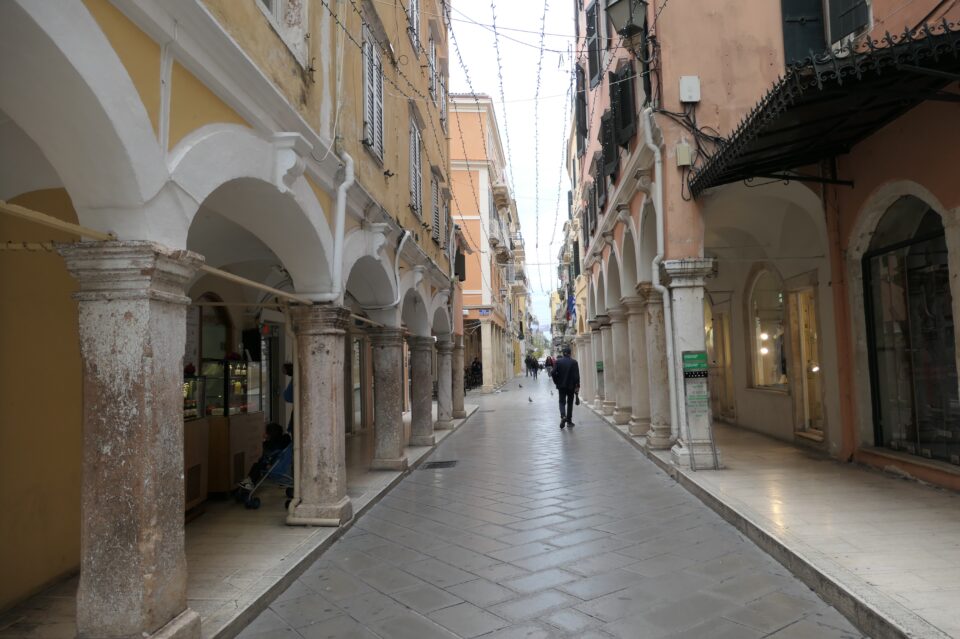
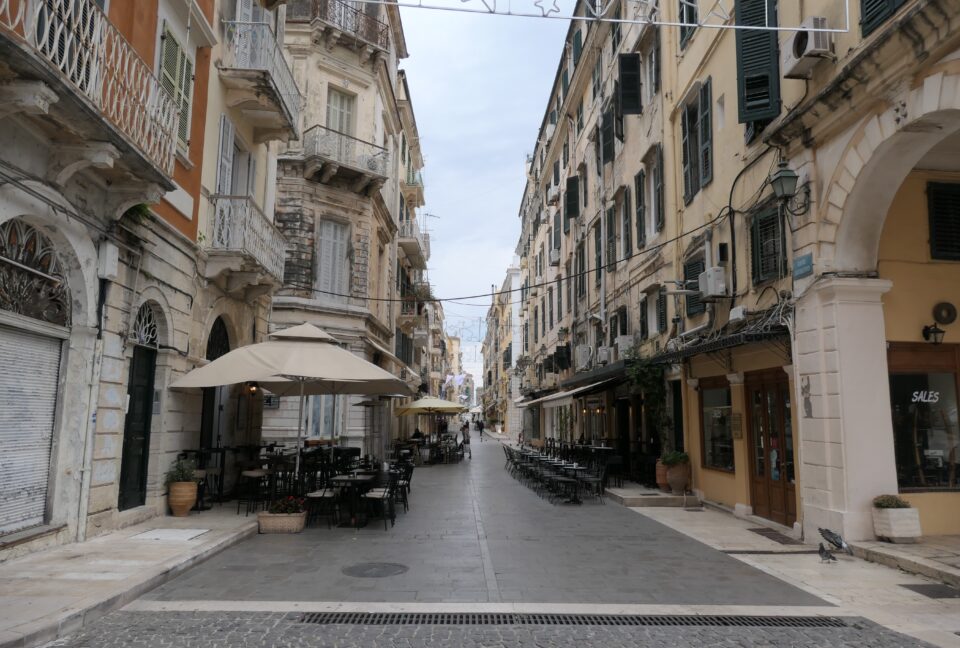
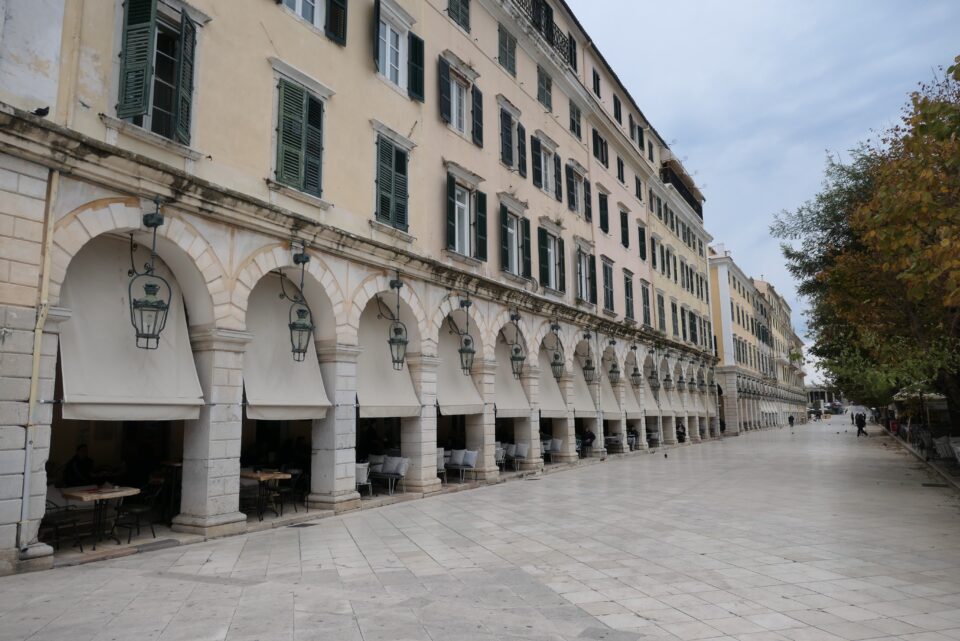
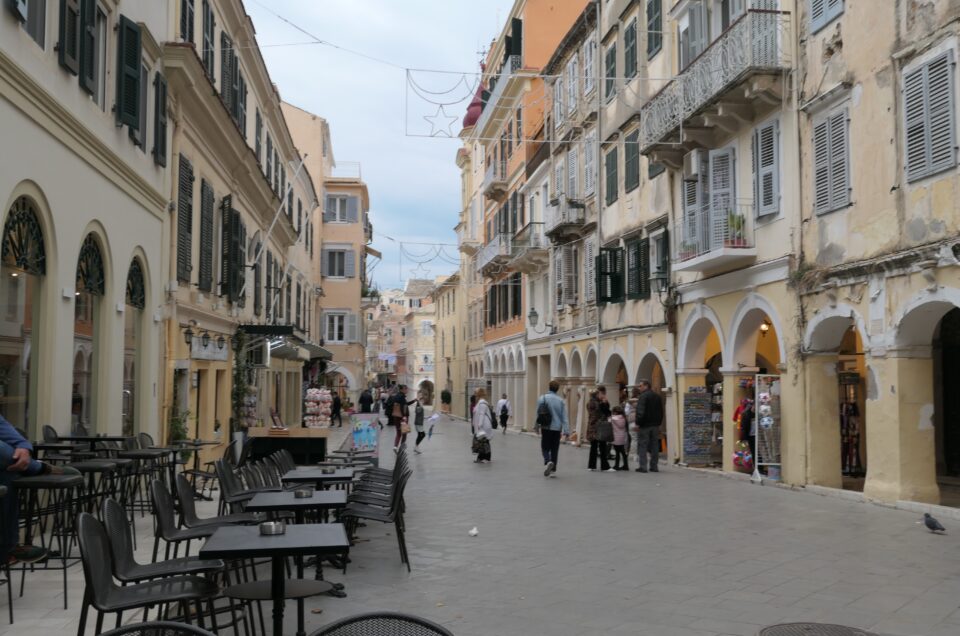
Since the beginning of the trip, we had been looking for Limoncello. In Corfu, we hit the jackpot – Limoncello is sold everywhere – in all the tourist stores, even in the supermarket. Lemons are grown on the island and it is a local product. The yellow limoncello usually sits on the shelf together with an orange-colored liquor. This is a liquor made from kumquats (Chinese oranges), that are also grown locally.
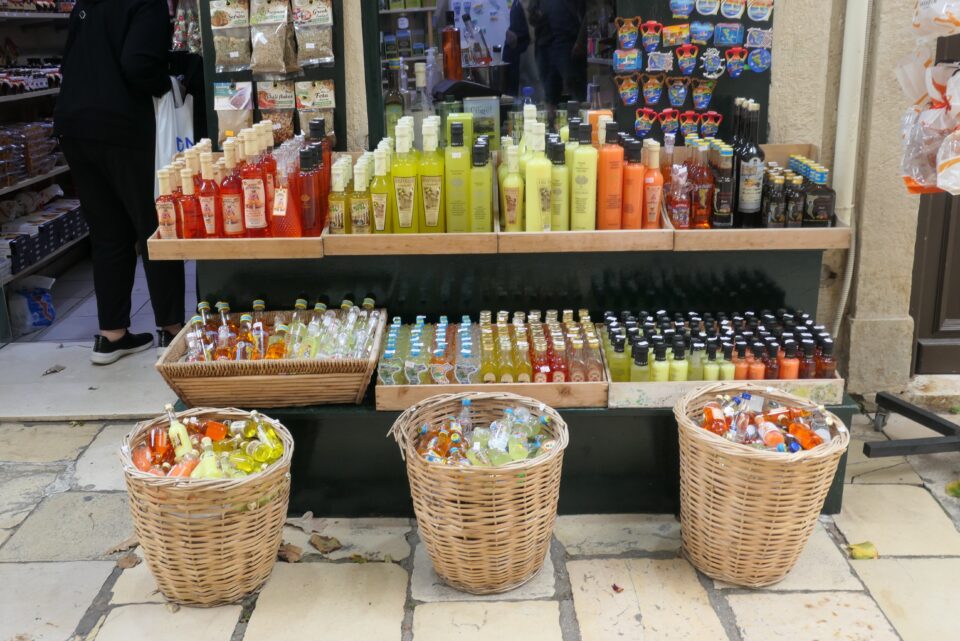
Mentioning local products, reminds me of something I forgot to include in the Jewish Corfu blog – the etrog controversy. In the 1800’s, Corfu was the main source of etrogs, used on the Jewish Sukkot holiday. They were grown on the island and shipped all over the world. As new locations started growing etrogs (Palestine, California), to help the new businesses, rumors started that the etrogs of Corfu were grafted, and therefore not kosher to use on the holiday. Additionally, in 1891, there was a blood libel massacre of 22 Jews in Corfu, that the non-Jewish etrog growers participated in. It was then seen unethical to buy the Corfu etrogs. Today there is no longer an etrog industry on the island.
Main attractions in Corfu Old Town include visiting the two fortresses. The New Fortress was just behind our apartment, and we went there first, only to discover it was closed. As we stood there, trying to figure out if we were in the correct place or not (Google said it was open), more and more people kept coming intending to visit the fortress. We were all surprised that the gates were locked.
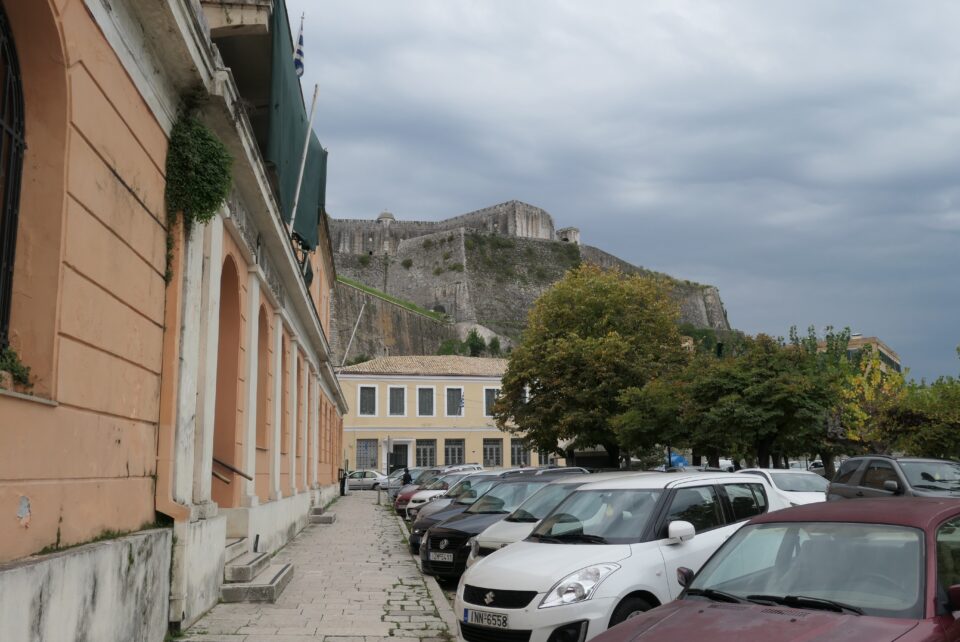
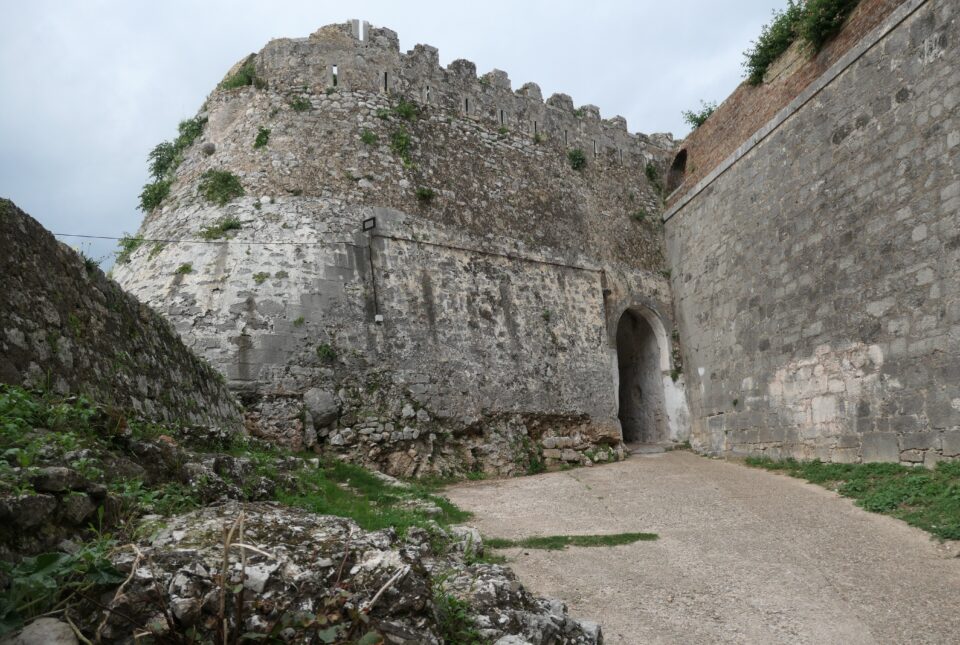
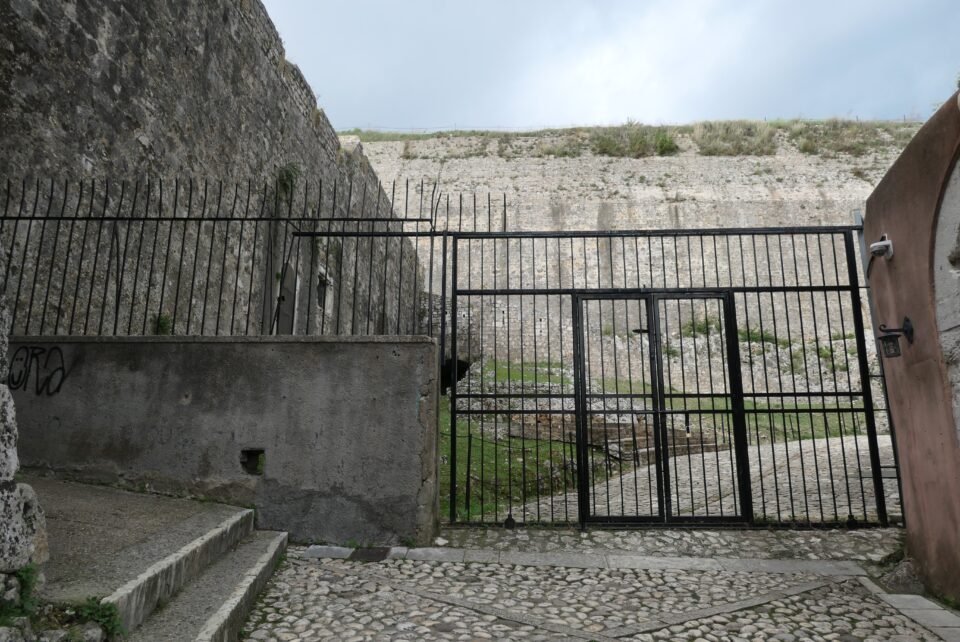
This was on Sunday and in general, it seemed that there were many more people walking around town than the day before. In speaking with some of them, we learned that they were in the city for the day and had arrived on a cruise ship. Later we were to drive by the harbor, and we could see their very large ship in the distance – the Regal Princess. I looked up the name and learned that this is a cruise ship that can hold over 5300 passengers and crew. Most of them descend on the city all at once – Old Town is a much busier place when there is a cruise ship at port.
The New Fortress was first built by the Venetians and then expanded by the British. The Venetians, to get construction materials for the fort, demolished over 2000 buildings in the Old Town, including the ancient town gate. The new fortress is considered a masterpiece of the art of fortification. When Corfu became part of Greece in 1864, an obligation in the agreement was to blow up part of the fort. What remains is supposedly still very impressive. Underground tunnels link the new fort to the old fort, but they are not open to the public.
Having given up seeing the New Fortress, we walked through Old Town, to the Old Fortress. When we paid admission, we asked about the New Fortress, and the teller said it was closed for the winter. A recurring theme on the island. The Old Fortress sits on a peninsula that was, for security reasons, cut off from the mainland by a moat. To enter the fortress, you must first cross a bridge over the moat.
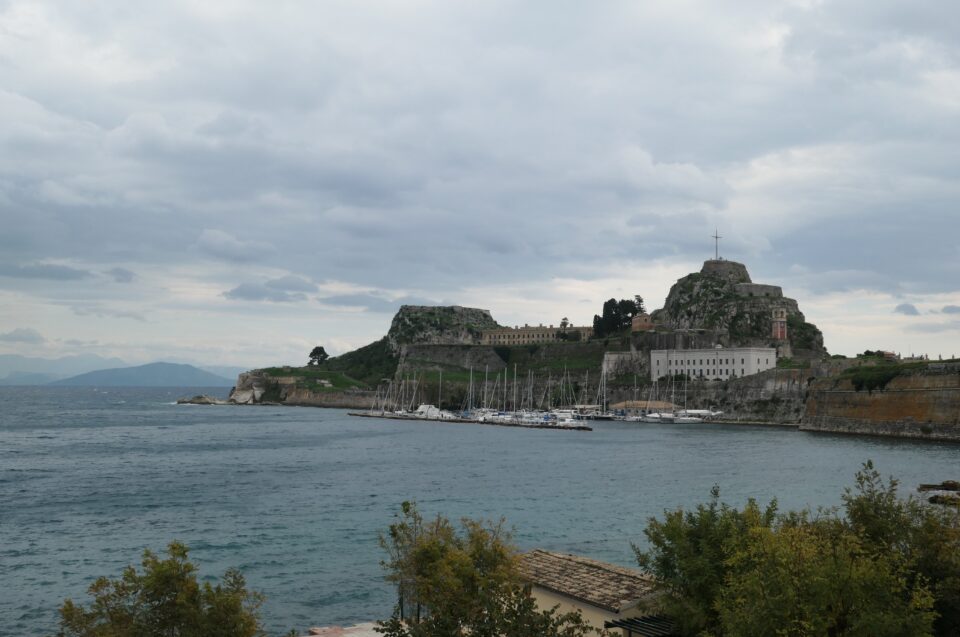
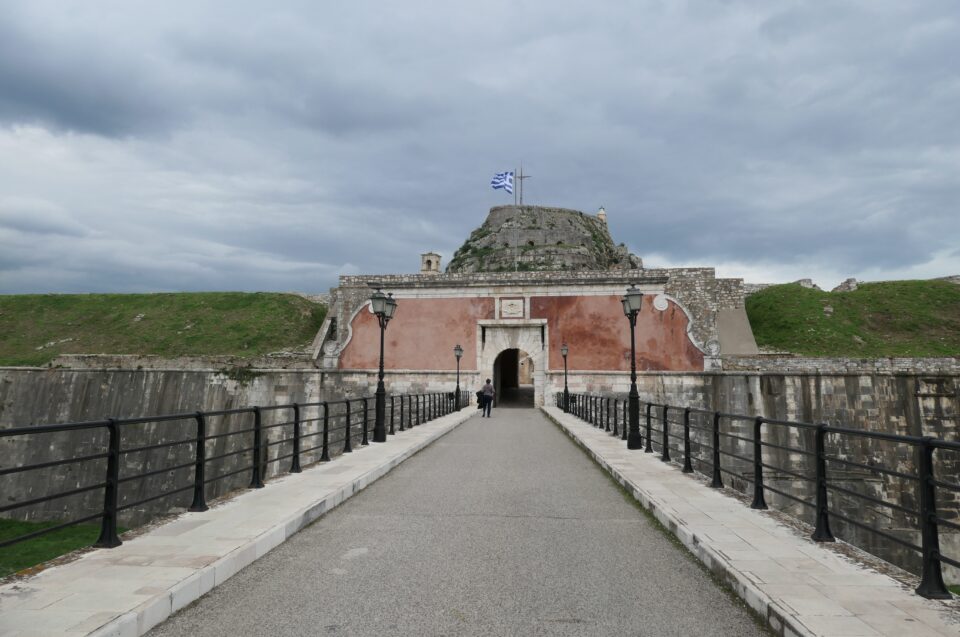
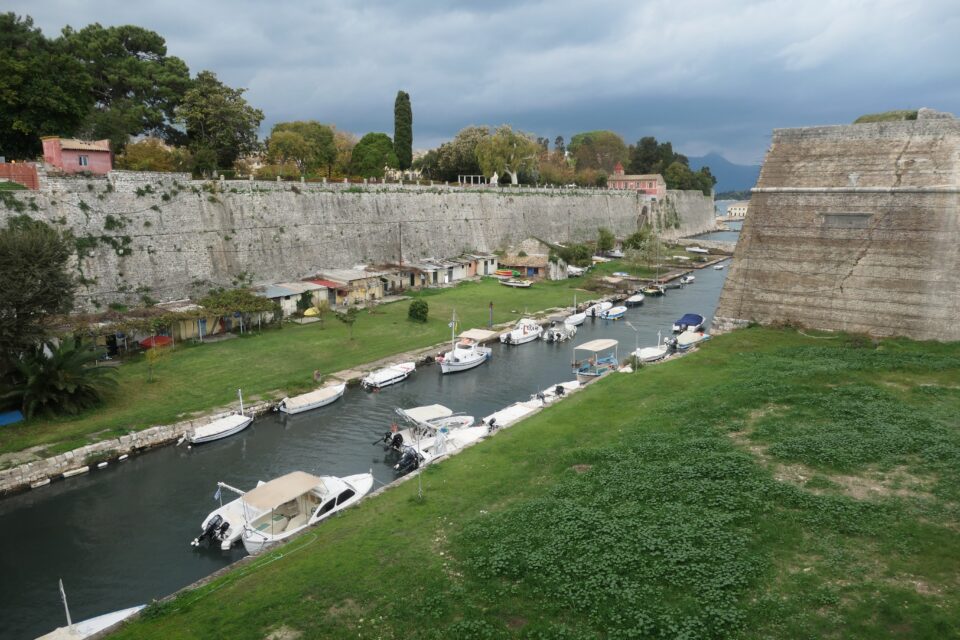
Once inside, there are several very large building left over from when the British controlled Corfu. The long building as you enter, over 100 meter long- more than a football field, was the British barracks. The building that was the hospital, sits as a ruin. The fortress also has a clock tower and a church. At the very top of the hill of the fortress sits a lighthouse. We climbed up there for a magnificent 360-degree view.
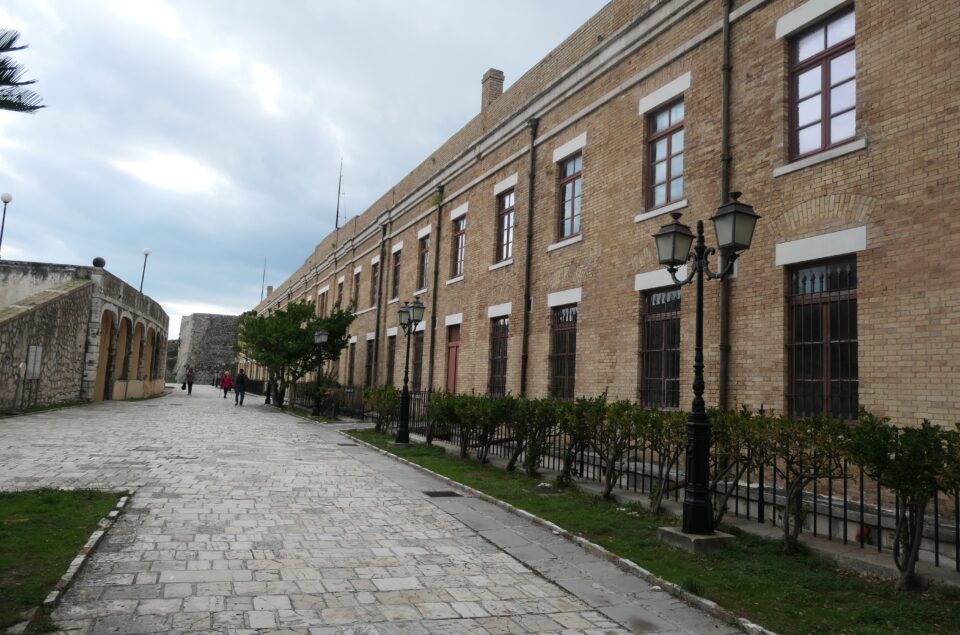
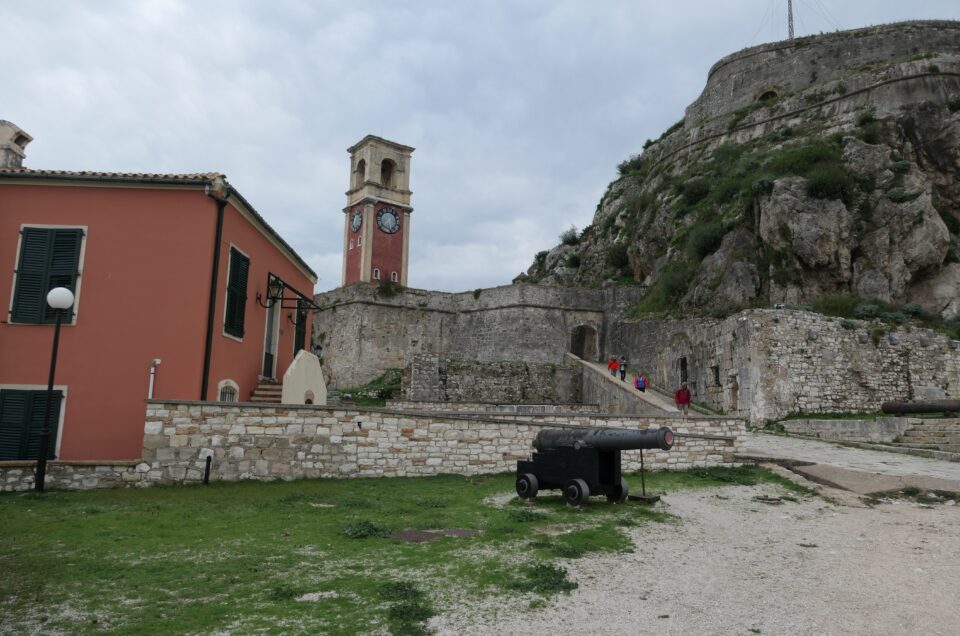
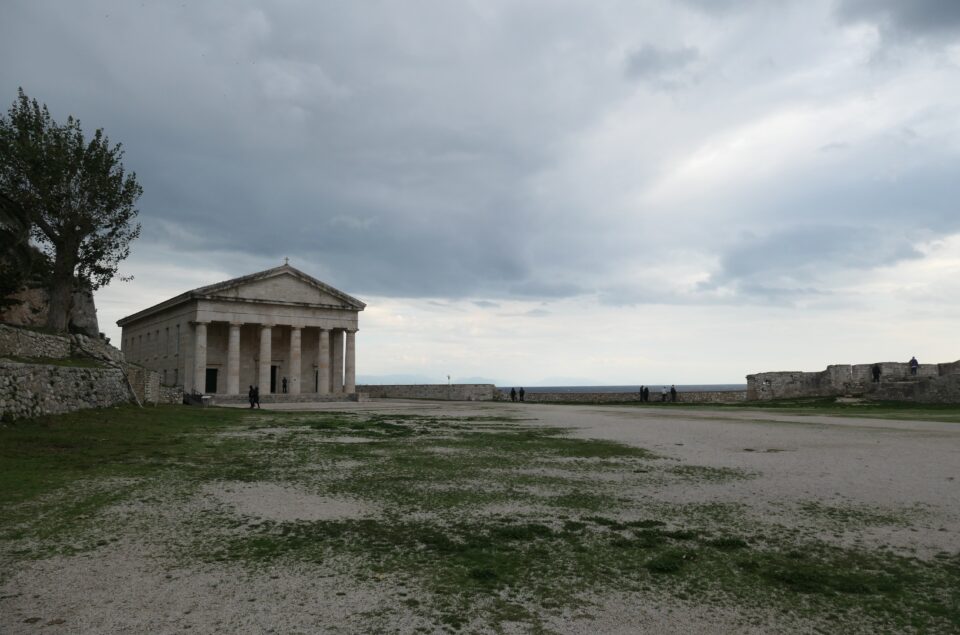
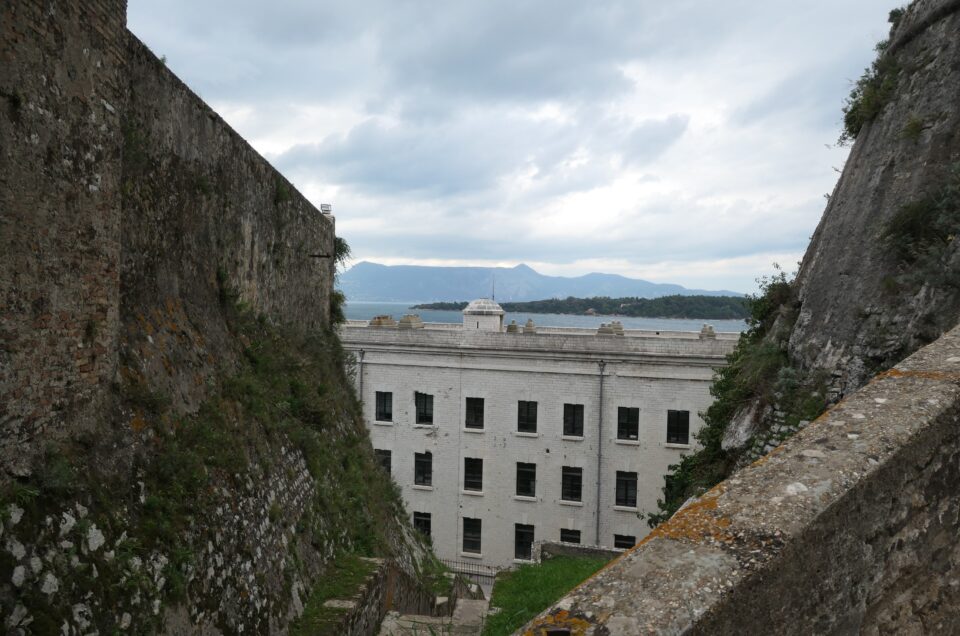
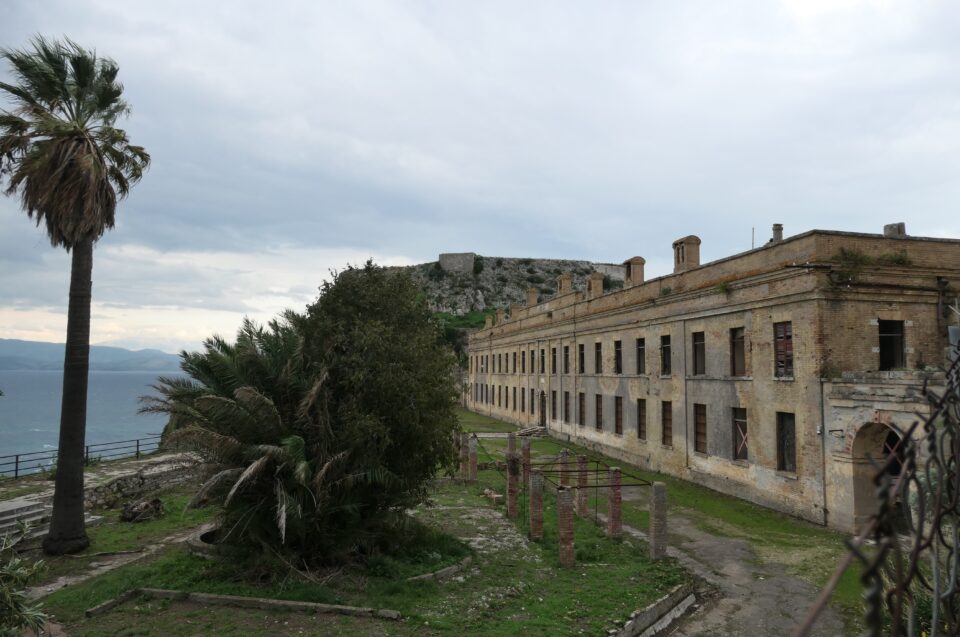
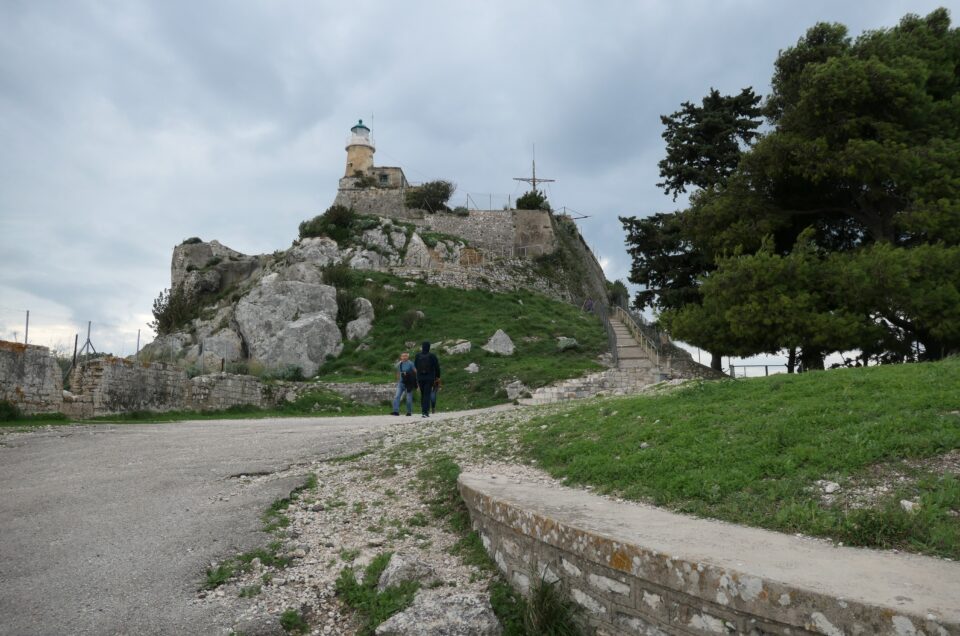
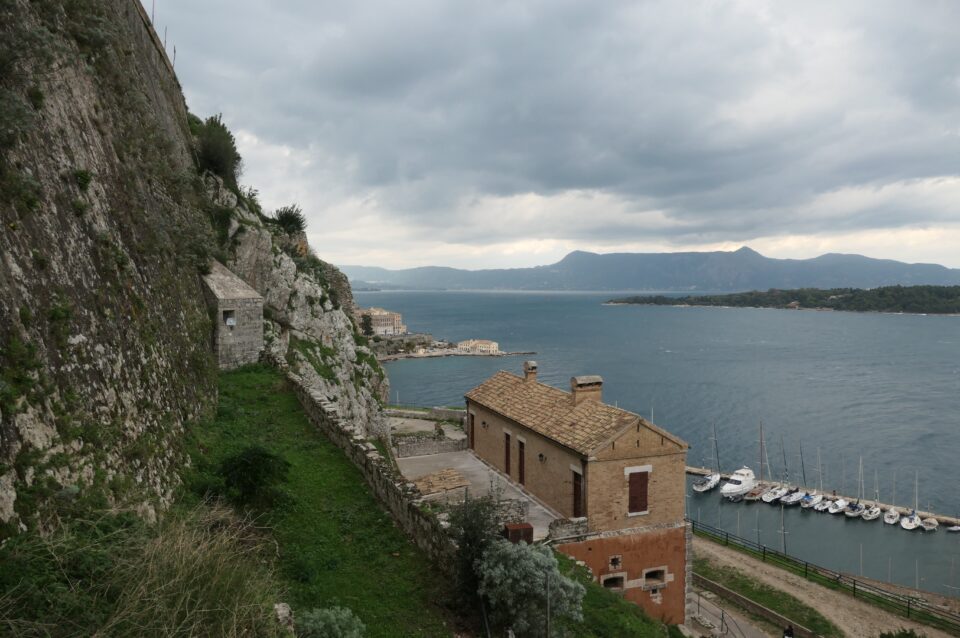

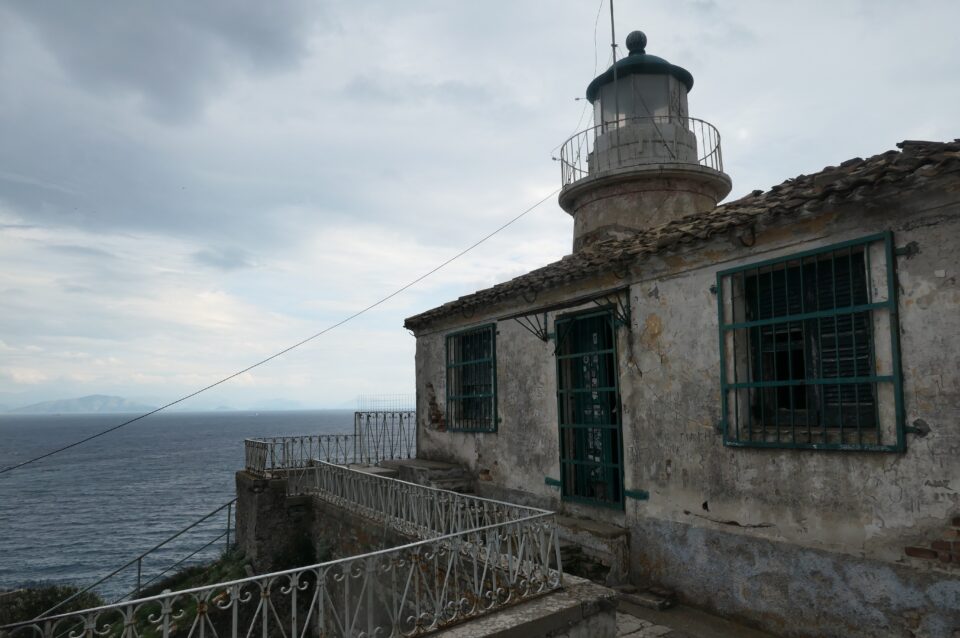
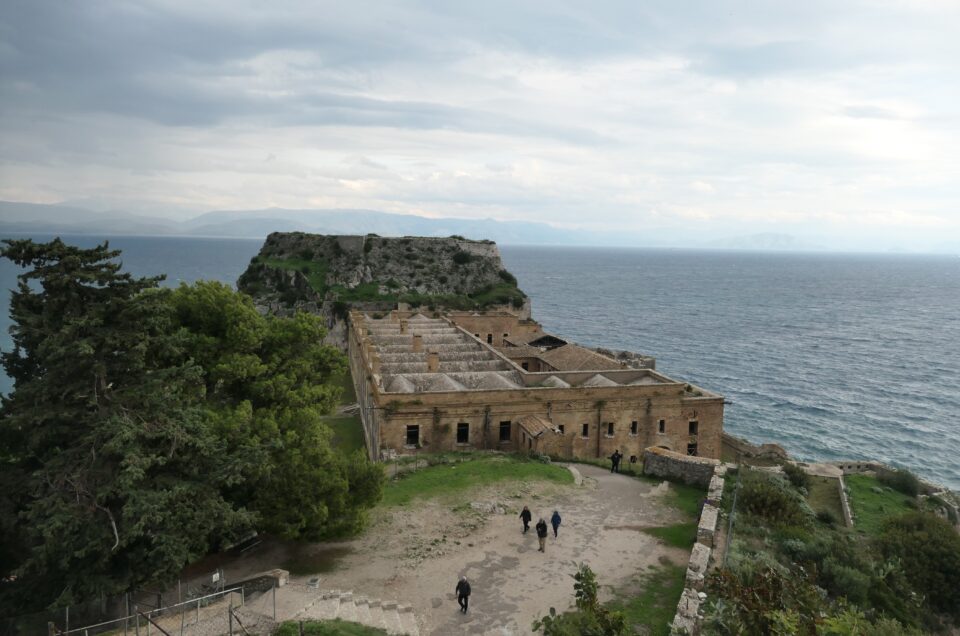
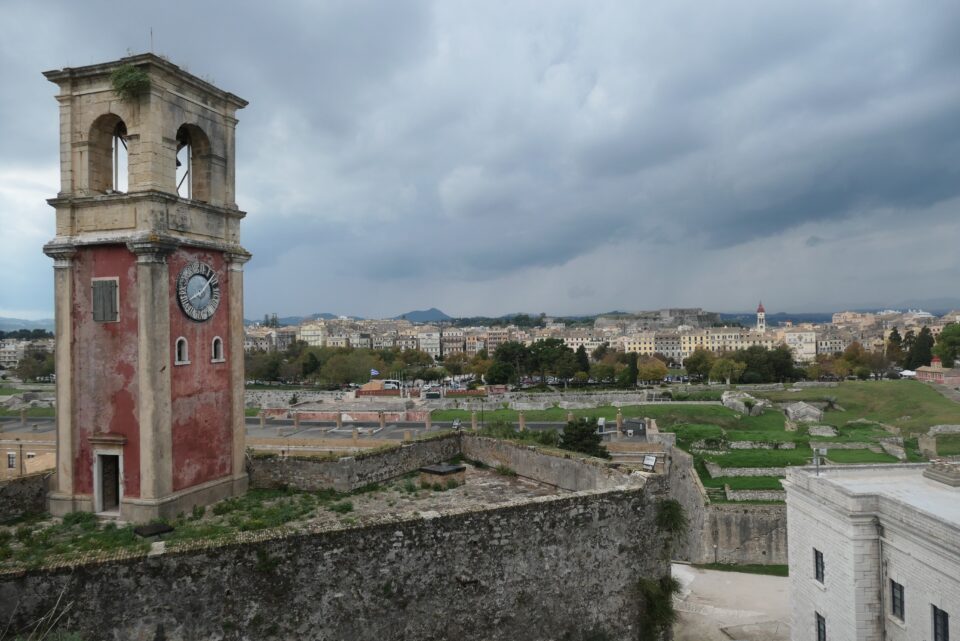
As we climbed down, we saw someone who had climbed about halfway. I said to him that the view was worth the effort, he replied “I’ve had enough. I thought this would be another Dubrovnik, but it’s not” Clearly a disgruntled cruise passenger. Yes, Old Town is not Dubrovnik, but has its own more small-town charm.
Like the New Fortress, the Old Fortress was originally built by the Venetians and then the British added some buildings inside the fort. The fort is also where the Jews were kept prisoner after they were rounded up by the Germans in 1944, before they were transported to Auschwitz.
Sunday afternoon, we reluctantly gave up our great parking space, and drove to the Monastery of Paleokastritsa. The city Corfu is on the eastern coast of the island and Paleokastritsa is on the west. The island is long and thin and to drove across the whole island takes only about 30 minutes. From the monastery are beautiful views of the coastline below.
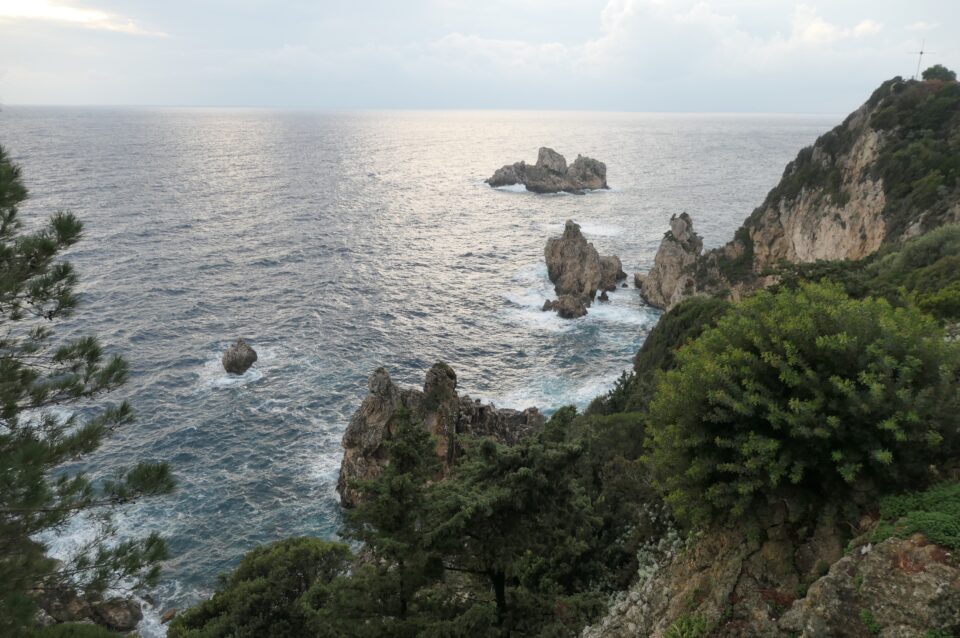
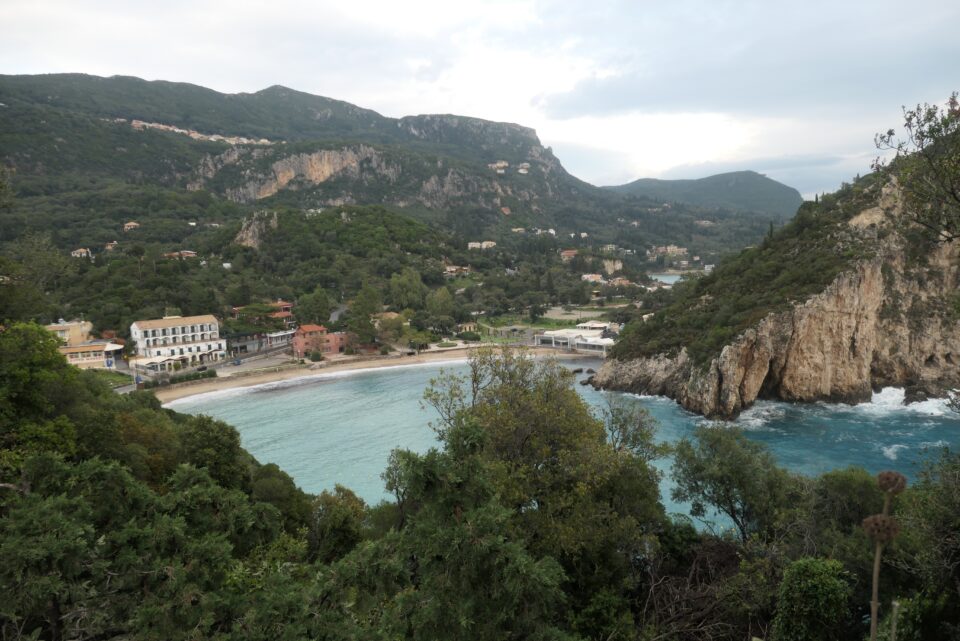
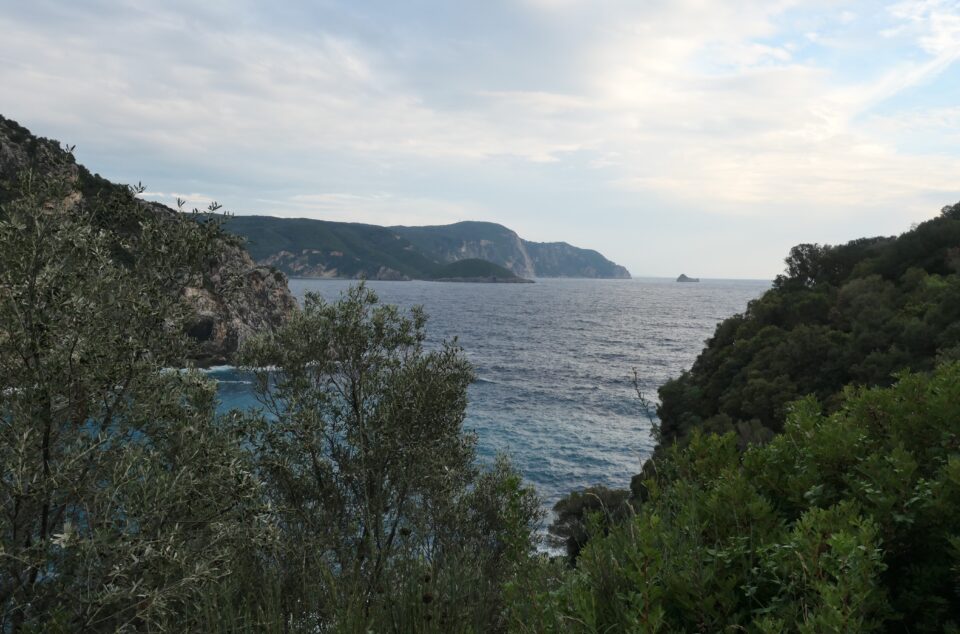
If I needed to summarize northern Corfu (the part of the island we saw) in one sentence, I would say high mountains with scattered pastel-colored villas surrounded by olive trees. The villas have, of course, stunning views of the Corfu coastline. Most of the island seems to be developed – houses, stores, businesses, or industry – in some places more dense than others. We passed many tourist destinations – hotels, shops, olive woodworking studios, pottery workshops, charter boat rental, etc. – all closed. Only the following day, when we drove to the top of the highest mountain on Corfu, did we feel any remoteness.
Mount Pantokrator, standing at 906 meters, lies in northern Corfu. At the top, was a café (closed) and a telecommunications station. From the summit, on a clear day, you can see the whole of Corfu as well as Albania, which lies a short distance over the sea. Today was not a clear day, but the view was stunning none-the-less.
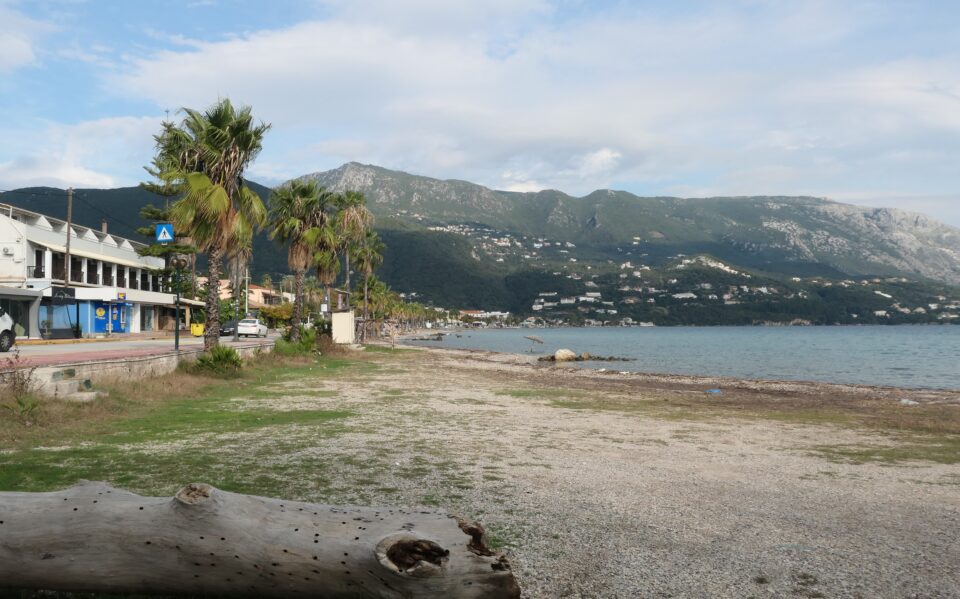
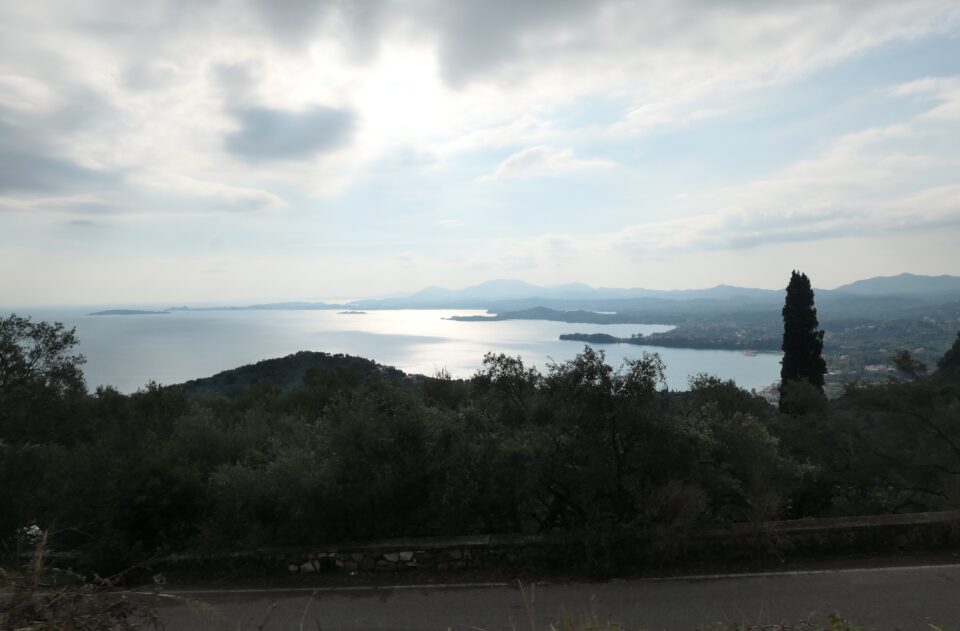
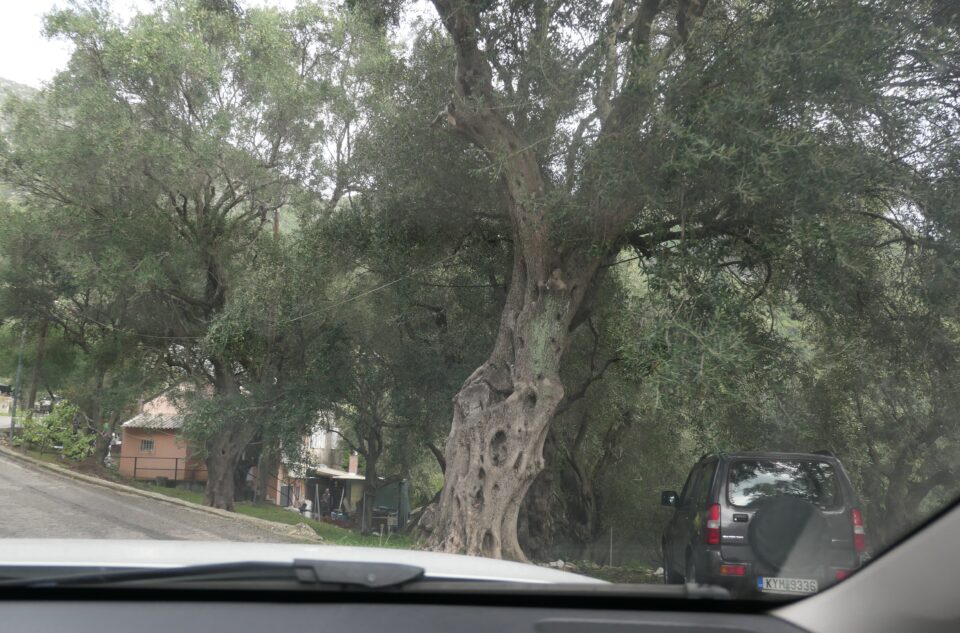
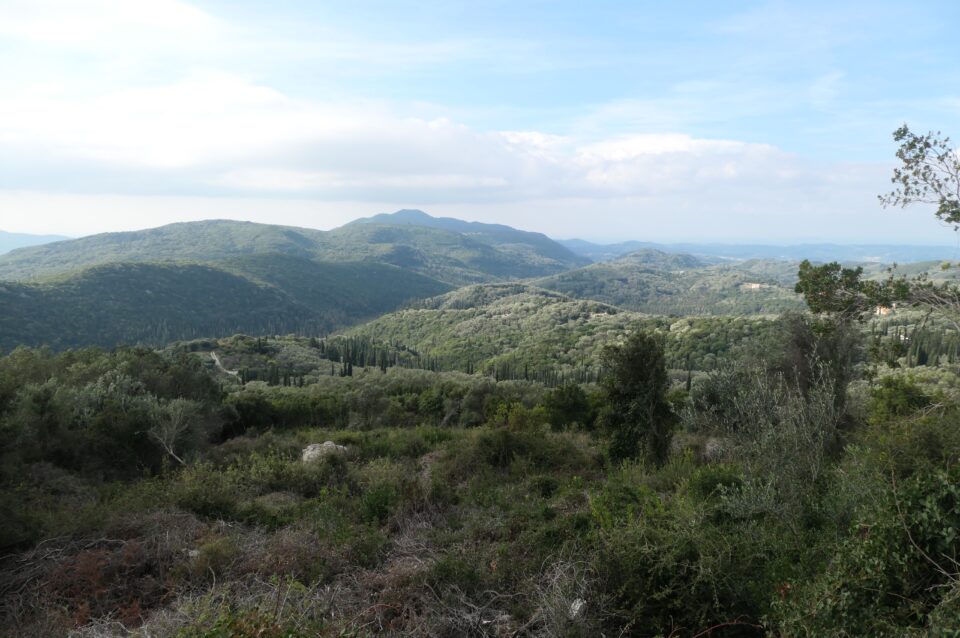
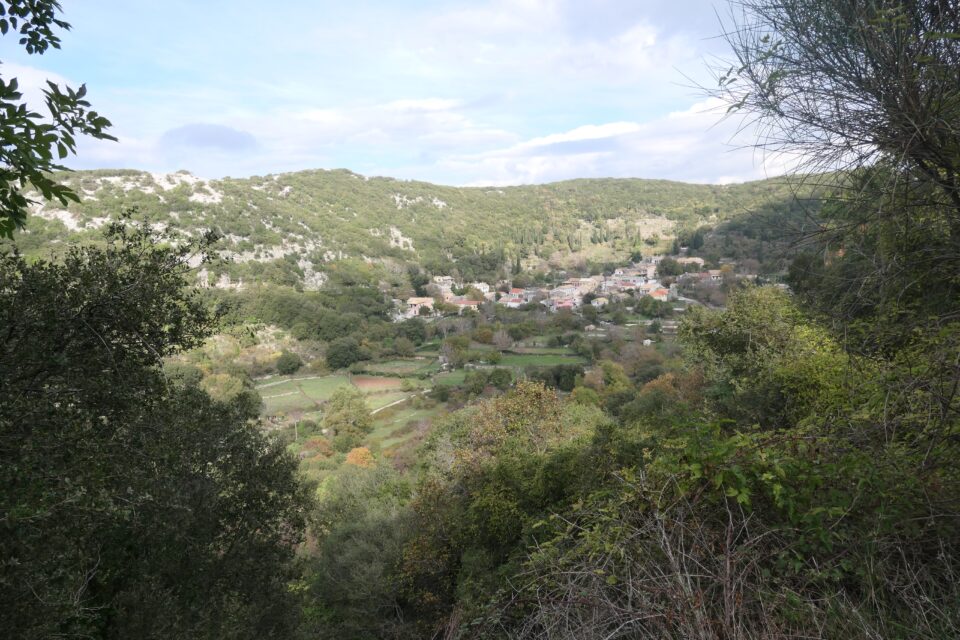
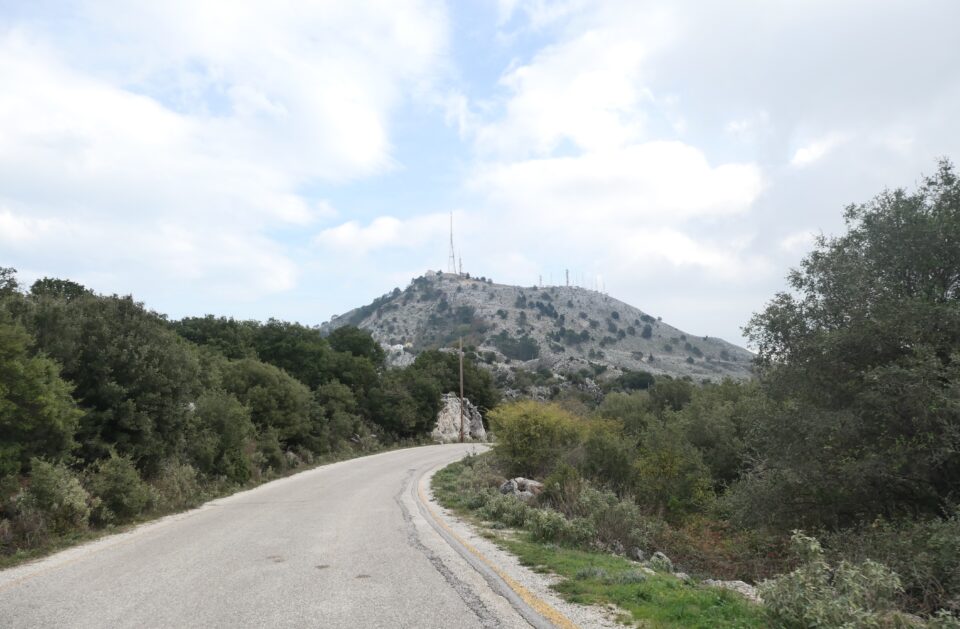
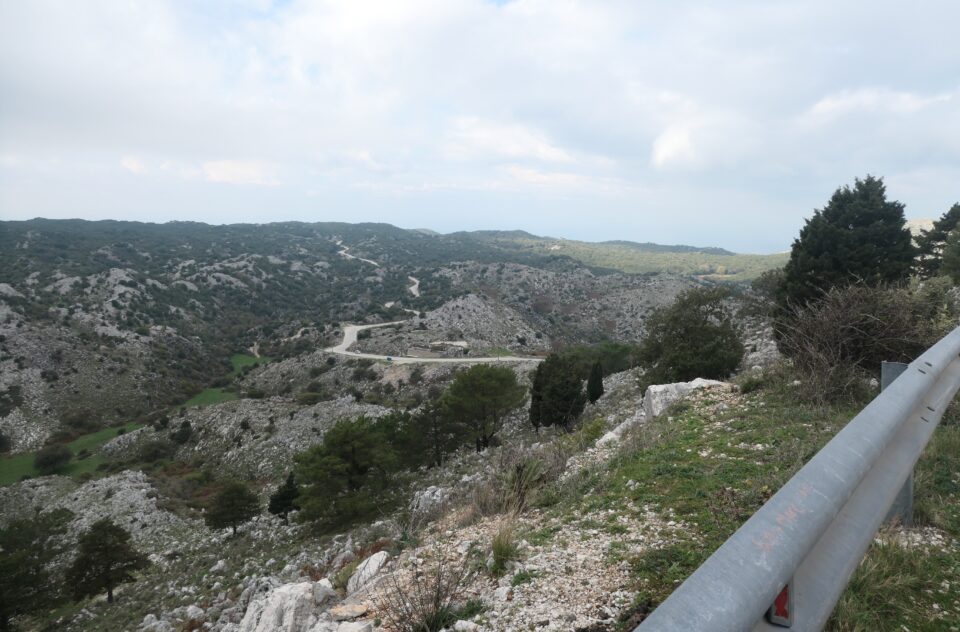


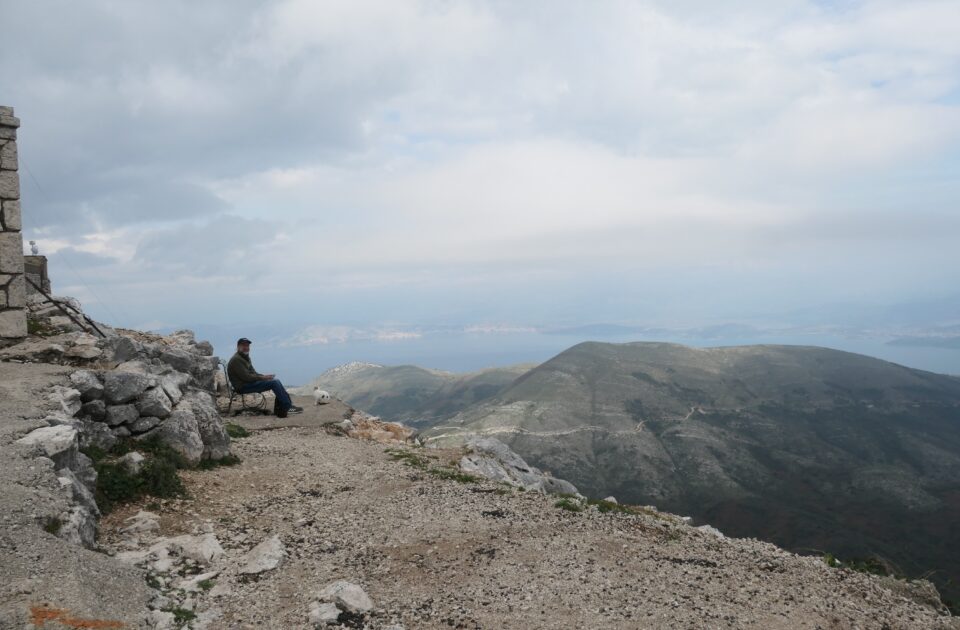
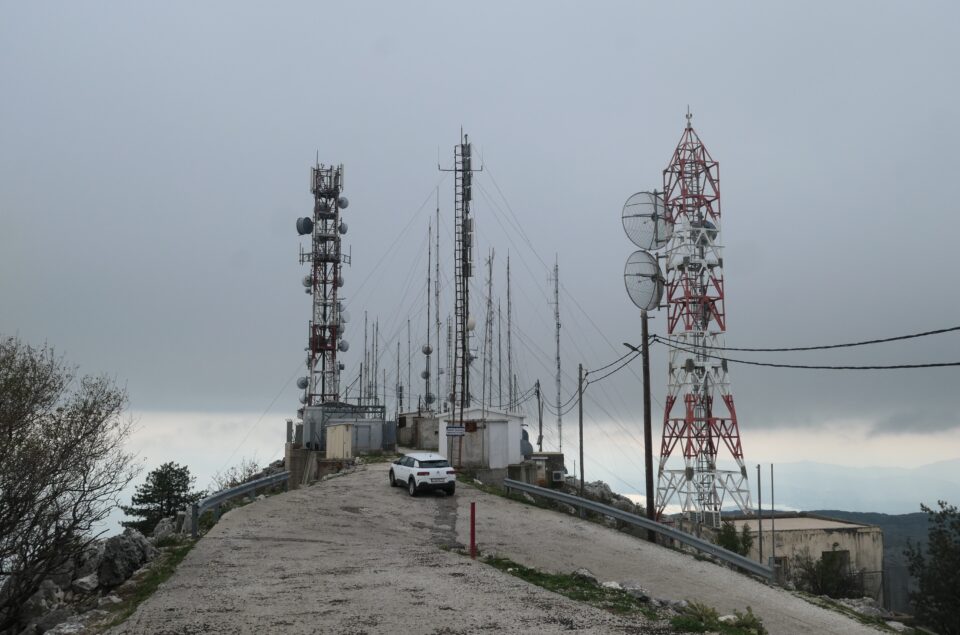
We were the only ones there. We enjoyed a quick picnic lunch, on a bench with a magnificent view. Within a minute of sitting down, as happens often in Greece, we were surrounded by a group of stray cats, waiting for us to drop some crumbs. They were in such a remote place, I felt sorry for them and shared my sandwich. We ate quickly, seeing that clouds were rolling in and rain was approaching, and we did not want to be on the mountain road in the rain. I asked Mark for the car keys, and as he handed them to me, one of the cats mistook it for food, jumped up and stuck her claw into my hand. She was hanging down from her inserted nail in my palm. Ouch. Luckily Mark always has a handkerchief ready, and we could wrap the bleeding. In general, there are many stray dogs and cats in Greece – but I will leave that topic for a different time.
From the peak of Mount Pantokrator, we headed down to the northern coast of Corfu then drove along the coastline back towards Corfu city. Every once in a while, the vegetation would open up and you would get a glimpse of the beautiful shoreline. Corfu coast is full of small inlets and rocky coves. We drove past several resort villages, all mostly closed.
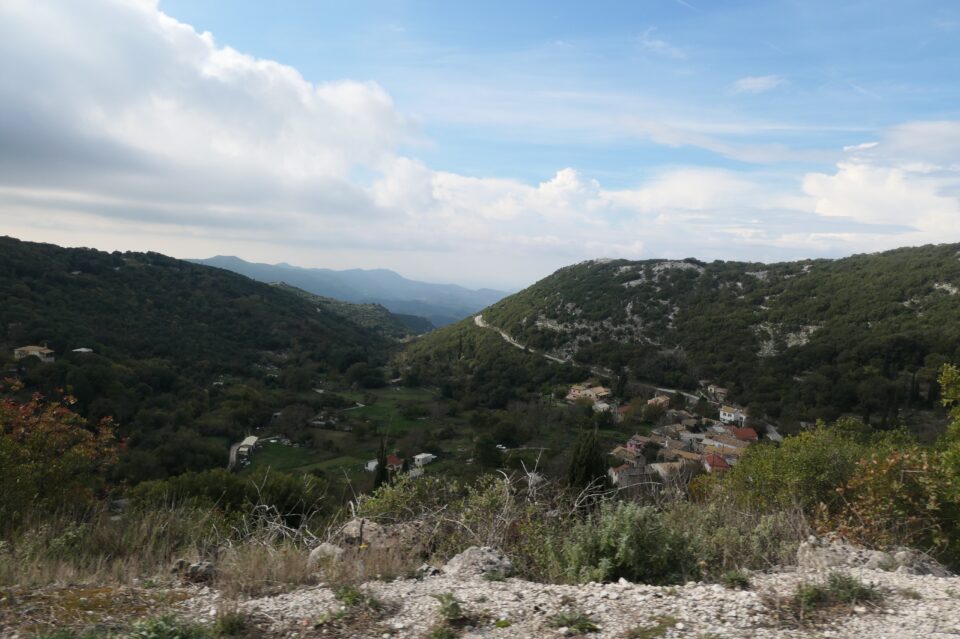
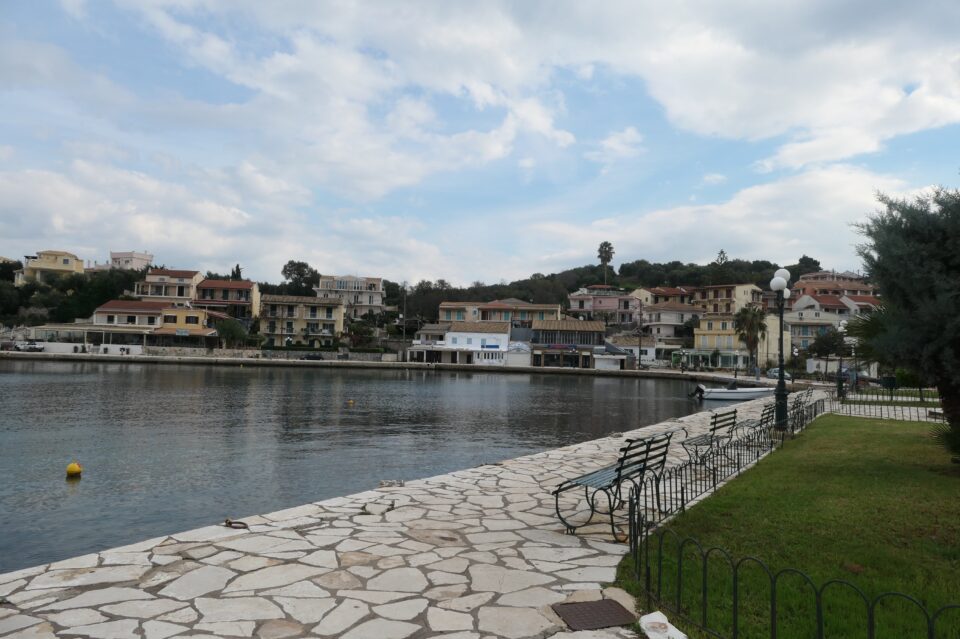


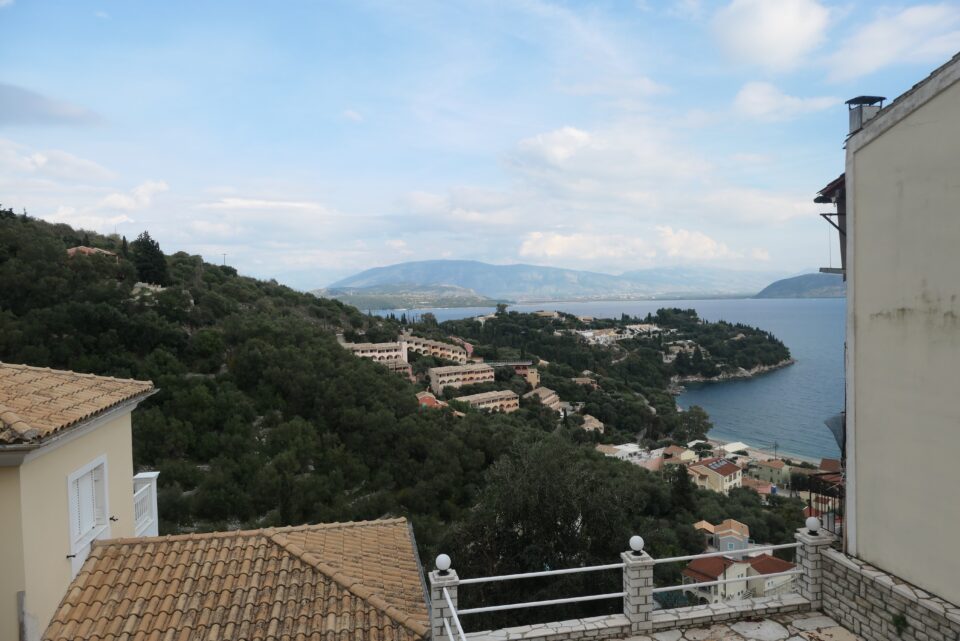
We then visited the Vlaherna Monastery. This is a small monastery that sits on a very small island connected to the mainland by a long wharf. A photo of this monastery is one of the iconic views of Corfu.
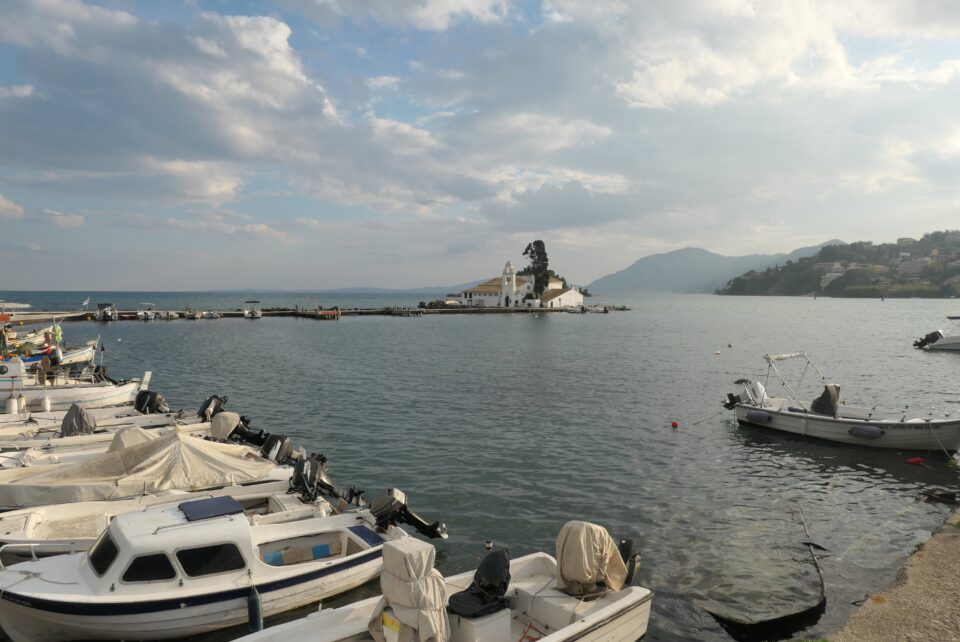
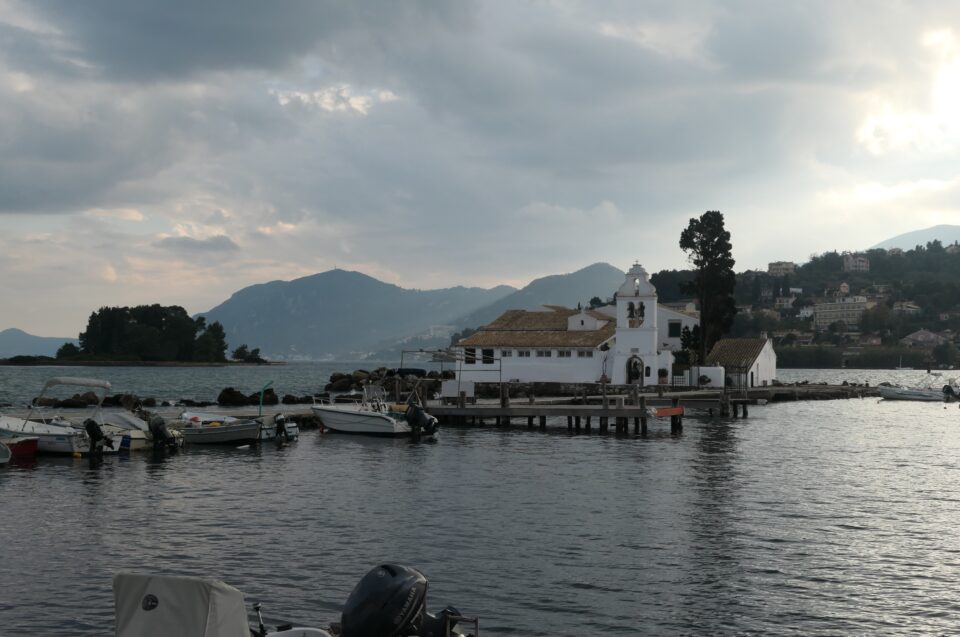
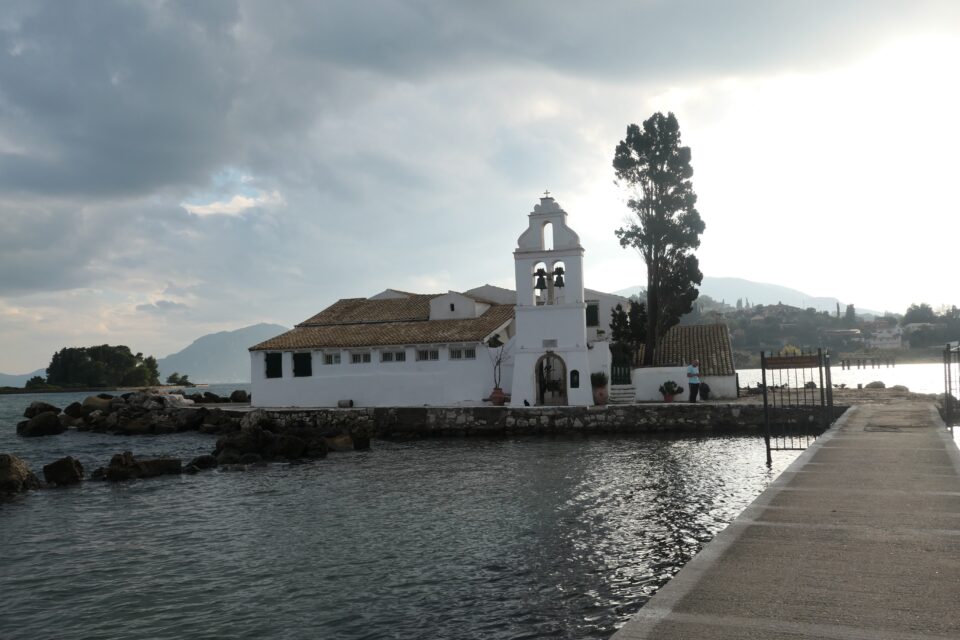
I cannot write about Corfu without mentioning the Durrells. I first heard of the Durrells when I looked for books to read that take place in Corfu. On the list was My Family and Other Animals by British naturalist Gerald Durrell. After suffering a financial crisis in the UK, his family (a widowed mother and three siblings) moved to Corfu, where life was cheaper. This book is the first of an autobiographical trilogy that comically depicts his carefree childhood spent on the island between 1935 and 1939. In 2005, the books were adapted into a film by the BBC and then in 2016, the ITV network turned the story into a TV sitcom that ran for four seasons.
Today on Corfu, you can find many tourist attractions related to the Durrells such as visiting the house they lived in, an Airbnb that provides a Live Like the Durrells holiday experience, The Durrell Trail (follow in the steps of George Durrell and his family), and so on.
We spent three full days in Corfu – not enough to see everything I would have liked to see. The weather also did not fully cooperate. Always good to leave something for next time.
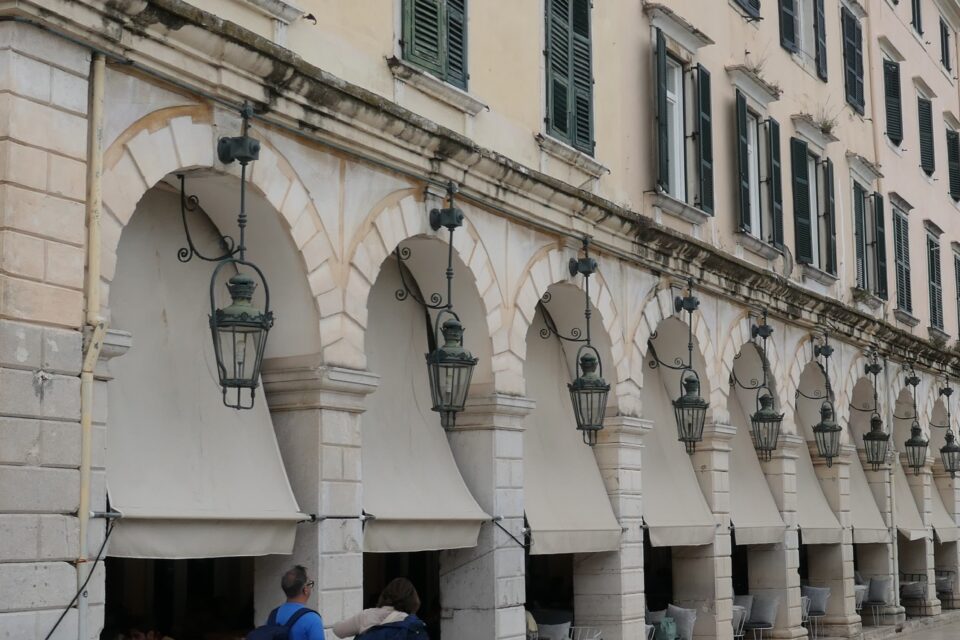
Ouch! How’s your wound?